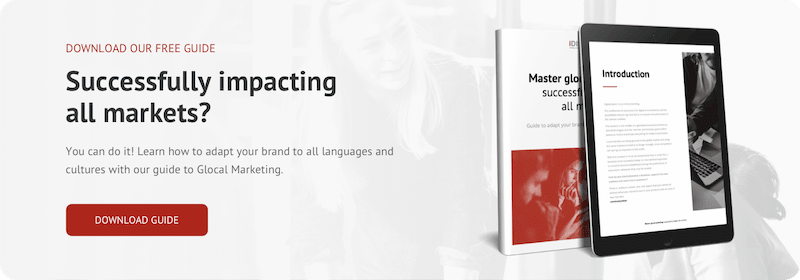If you've made it to this article, the chances are your company’s website is currently powered by HubSpot CMS technology and you want to do one of the following three things:
- Make your website multilingual,
- Improve content management for your multilingual website.
- Or, you are currently working with HubSpot and are considering changing to their CMS.
Right? Well, if you are here for any of these or similar reasons, we encourage you to keep reading.
How does HubSpot CMS HUB work?
As you may know, HubSpot’s CMS Hub is a Content Management System (CMS) tool. These tools are based on software that allows you to create a website to manage your content without coding it from scratch.
CMS Hub’s array of features turn this cloud platform into a real control center for you to manage all the parts that make up your website: the webpages, blog, links, images, smart content and much more.
And if that's not enough, HubSpot CMS Hub also has options if you want a multilingual website or blog.
You can make your content available in several languages by creating multilingual variants that link to the source language page. This way you can create independent pages for the various languages you want your website to cater to, with the option of having each one of them indexed and crawled by search engines, allowing you to position your content in different languages.
However, how much does this system require in terms of time, effort and budget?
We know: depending on the size and needs of your project, you will likely require an automated system for managing your multilingual website on HubSpot.
Don't worry, there are options you can use to easily manage your multilingual content and streamline your workflows.
But first, let us tell you about the cornerstone of any multilingual content strategy: localization.
Multilingual websites: what does localizing a website involve?
We usually use the word “translate” to simply refer to the process of adapting content into several languages within a multilingual website or blog.
But in reality, this process is a bit more complex as it involves not only literally transferring the source language text to the target language, but also making the website fit the local culture of the target market where the company wants to expand. This is why we use the term localization.
It is a complex procedure that encompasses several areas; just transferring the source language to the target language word for word is not enough.
Therefore, simply translating your webpages will not be enough to develop a successful multilingual content strategy for winning over your audiences in their respective languages.
When taking on the task of creating a multilingual website, scores of companies turn to solutions such as hiring external translators, installing plugins, or even tackling this in-house using staff who know the languages being translated.
However, none of these options is fully effective for localizing a website, for three main reasons:
- Knowing how to speak a language does not mean we know how to properly translate and adapt content.
- Even if you have a professional translator, is it enough just to know how to translate? As we have already said, no. Website localization also requires other knowledge, such as understanding SEO strategies.
- Machine translation plugins can be very useful and translate a page in seconds, but more often than not, they churn out poor translations and you lose control of your publications, hurting your SEO and user experience.
Let's take a closer look at the most common problems faced by users who have a multilingual site on HubSpot CMS Hub using one of the above solutions, especially plugins.
Common problems when creating a multilingual HubSpot CMS Hub website
Translating your website using some plugins can cause the following problems:
- Your website is generated in subsystems outside the web server itself, so the server loses control and statistics.
- The language selector remains outside the server, depending on external solutions to access your translations.
- URLs are not translated or differentiated between languages, seriously harming SEO by not being indexed correctly on Google.
- The page loading speed of a user’s browser is slowed down by external processes.
Would you like to know the perfect solution for creating multilingual websites easily, efficiently and error-free?
Read on to discover our integrated translation system: iDISC Singoolar for HubSpot.
iDISC Singoolar for HubSpot: an integrated translation solution for multilingual websites
At iDISC, we fully understand how hard it is to have and maintain a website in different languages synchronized. We have been working with IT for over 30 years and have helped a host of companies like yours expand internationally thanks to multilingual websites that are always up to date. This led us to create the iDISC Singoolar solution.
How does our integration work?
- It offers you different translation options, from machine translation to human translation performed 100% by web localization professionals.
- Create online glossaries with terminology specific to your industry to maintain your brand’s voice.
- Create translation memories that build off previous work for consistency and streamlined workflows.
- Translate metadata and unify formatting changes of the original page in its language variants.
- Automatically propagate the changes you make in the main language of the website to the other language variants, both for text and formatting.
No surprises or issues with our integration.
You will get the following advantages when translating multilingual content on HubSpot:
- Source webpages are fully translated, with language variants created on independent webpages for each language.
- Even non-visible text gets translated: URLs, metadata, alt texts, forms, etc.
- Internal and external links are updated for solid webpage interlinking.
- Fully integrated with the HubSpot server, giving you full control over statistics.
- Page loading speed will not be affected, since pages in their corresponding language variants are hosted on the server.
- Certified quality and continuous improvement processes.
- Save time and streamline workflows with full management of your content.
- Strengthened positioning of your website in different markets thanks to multilingual SEO.
At iDISC, a translation agency with more than 30 years of experience, we help our clients reach new markets with the best technology and expert human resources.
If these reasons have convinced you that we are the perfect partner for your project, feel free to get in touch.
We hope you’ve enjoyed this article. If you would like to learn more about our solution, you will find more information on the Singoolar multilingual translation webpage on HubSpot.





